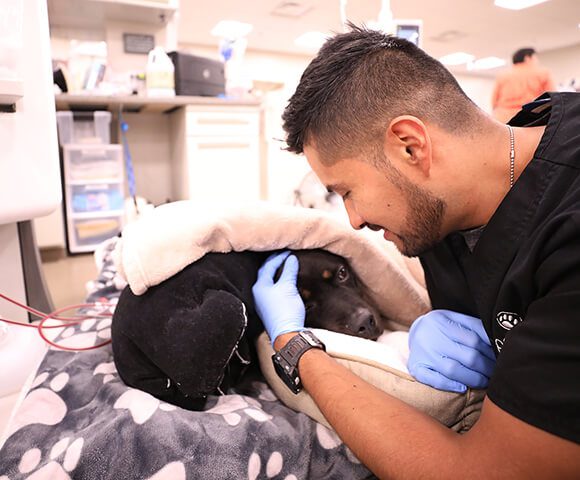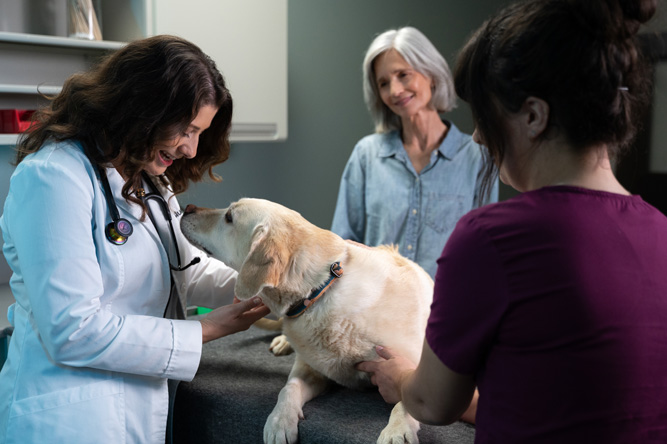A treatment option you may not know about.
Hemodialysis is the process of exchanging water, solutes and toxins across a semipermeable membrane (artificial kidney). Over the last decade, the number of universities and private practices offering hemodialysis has rapidly expanded.
Despite this, hemodialysis still remains unavailable to most veterinary patients. BluePearl is proud to be included in the group of private practices to offer hemodialysis in a few of our hospitals.

Hemodialysis process.
Hemodialysis acts as a deep cleaning of the blood when the kidneys aren’t working well enough to do it on their own. Using an artificial filter in place of the kidneys, hemodialysis removes waste products and toxins from the blood.
The equipment used for dialysis in pets is the same as that used for humans; however, the techniques have been adapted to account for the different sizes of pets. Delivering hemodialysis is a very technical process and requires not only specialized equipment but a specially trained and dedicated staff.
In pet hospitals, hemodialysis is most often used to treat acute kidney injuries. Other reasons include hyperkalemia, fluid overload, oliguria/anuria, intoxication, and helping remove waste in pets with chronic kidney failure. The earlier dialysis begins, the better the outcome usually is, so talk to your family veterinarian about whether hemodialysis may be beneficial for your pet.
Dialysis is not a cure for kidney injuries or failure; rather, it acts as a support system in place of the kidneys, which can help give them time to repair themselves. With chronic kidney failure, however, kidney function cannot be restored, and hemodialysis is used on a case-by-case basis to provide palliative support.
Every pet’s case is different, so it’s difficult to predict how long they will need to undergo hemodialysis. For intoxication and fluid overload, many pets recover after one session. For acute kidney injury, patients receive therapy for 2-4 weeks on average. It can, however, take months.

Find your nearest specialist.
We have over 100 specialty and emergency pet hospitals throughout the country.
Not all services are available in all BluePearl hospitals. Contact your local BluePearl for services available at that location.
